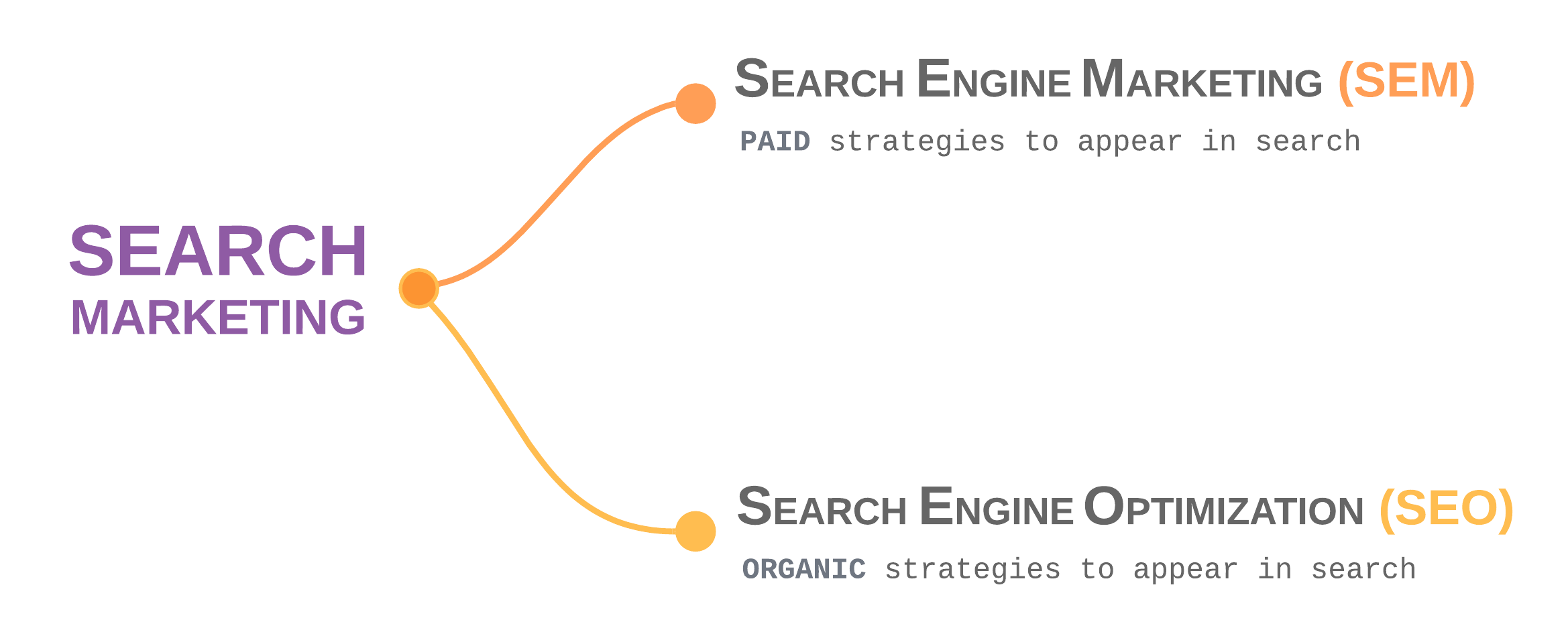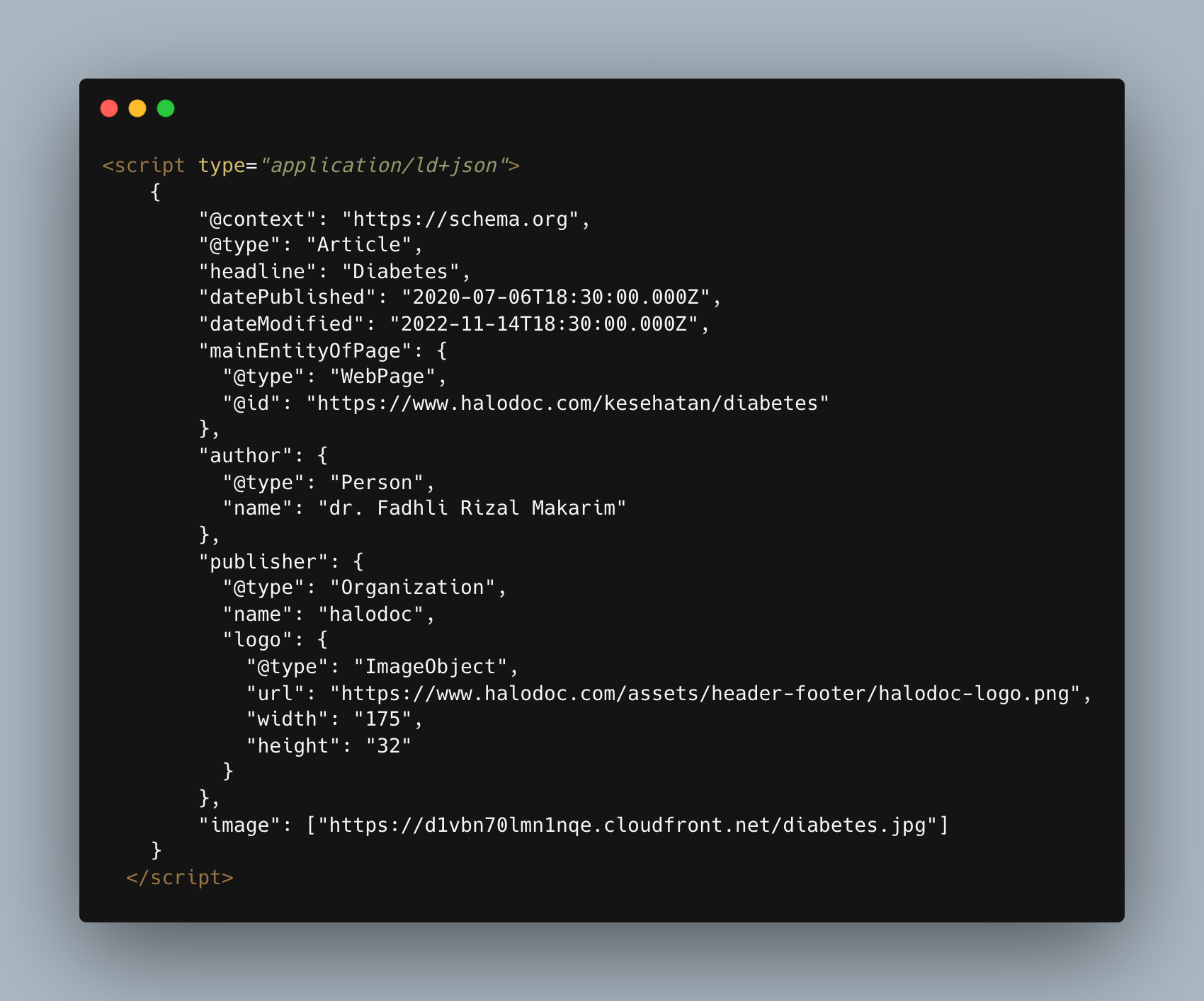Search Marketing- Beginner's Guide to Marketing Through Search
Search engines are essential tools for navigating the vast and ever-expanding landscape of the internet, and play a crucial role in helping users find the information they need, and for businesses to reach their target audience.
Search marketing is a cost-effective and measurable way to reach potential customers who are actively searching for products or services related to your business. By improving the visibility of your website in search engine results, you can increase traffic, leads, and sales. At Halodoc we have been continuously using different strategies of search marketing to make our product available to the relevant people.
Two major categories within Search Marketing:

Why Search Marketing?
Search engines are one of the most common places for millions of people to find some answers/solutions to their problems. Be it to find some products or restaurants or hotels or anything else, the first thing we try is, to search via search engines.
So from a business provider's point of view, it's very important for their product to come on the top of the Search Engine Result Pages (SERPs) for relevant search queries. This is where search marketing becomes critical to growing businesses.
It helps in:
- Increasing search visibility
- Improving search rankings
- Driving more traffic to the website via search (and hence the revenue)
Now let's look at the two important strategies of search marketing to improve the SERP rankings.
SEO vs SEM:
SEO is focused on optimizing a website's content, structure, and other elements to improve its ranking in organic search results. It is a long-term strategy that requires ongoing efforts to maintain and improve the website's ranking.
SEM, on the other hand, is a paid marketing strategy that involves running paid ads on search engines. SEM can help a website get quick visibility and traffic, but it requires ongoing investment to maintain.
The main differences between SEO and SEM are:
- Cost: SEO is a free strategy, but it requires time and effort to see results. SEM involves paid to advertise and requires a budget.
- Timeline: SEO is a long-term strategy that takes time to see results, while SEM can provide quick visibility and traffic.
- Search result: SEO focuses on organic search results, while SEM focuses on paid search ads.
- Testing: SEM is more favorable than SEO for testing as its result is immediate.
In short, while both SEO and SEM aim to improve a website's visibility and attract more traffic from search engines, they are two different strategies with different approaches, costs, and timelines. Many businesses use a combination of both strategies to achieve their digital marketing goals.
At Halodoc we have been using both the strategies of SEM and SEO together to reach the target audience. We worked extensively on improving the core web vitals for our web pages and making sure that all our web pages are responsive. Used server-side rendering (SSR) to provide fully rendered HTML to the client, which makes it easier for search engines to crawl and index the page.
Search Engine Marketing (SEM):
SEM is often referred to as paid search or pay-per-click (PPC) marketing. With this one can tell the search engine exactly for which keywords their web pages should come on top of the SERPs. Once someone clicks on the paid search Ads, the search engine gets paid by the advertiser (hence, Pay Per Click). The amount advertisers pay for each click is called cost per click (CPC).
This is what it looks like:
SEM is a quick and powerful strategy to reach the targeted audience as it can immediately provide visibility and traffic by enabling the Ads and also it ranks your web pages above organic search results in the SERPs.
Search Engine Optimization (SEO):
SEO is the process of improving the quality and quantity of traffic to a website or web page from search engines. This involves organic strategies which are unpaid, unlike SEM.
SEO can be divided into three main categories:

On-page SEO:
It refers to the optimization of individual web pages to improve the website's ranking and earn more relevant traffic. It includes strategies like:
- Optimizing page titles and meta tags: Using proper title and meta tags can help search engines in understanding the content in better way. Using
ogmeta tags can help in social media marketing.

- Content creation: Content creation is a critical component of SEO, as search engines rely on high-quality, relevant content to determine the relevance and value of a website. Conduct keyword research and use relevant keywords and phrases. Focus on providing high-quality, relevant information that meets the needs of your target audience.
- Images with proper alt attribute: One way to optimize images is by using the alt attribute, which is a description of the image that can help search engines understand its content. Avoid stuffing your alt attributes with too many keywords, as this can be seen as spammy by search engines and can harm your rankings.
If you have decorative images that don't add any value to the content, include an empty alt attribute (alt="") to indicate that the image is decorative and not relevant to the content. - Internal linking: Internal linking refers to linking of other pages within your website. Use contextual links, which are links within the body of your content, rather than links in sidebars or footers.
- Using semantic tags: Semantic tags are HTML tags that provide contextual information about the content they contain, making it easier for search engines to understand the structure and organization of your site.
Off-page SEO:
It refers to the optimization of external factors that influence the website's ranking in search engine results pages (SERPs). It mainly includes strategies like:
- Link building: Link building is a crucial aspect of SEO that involves acquiring links from other websites to your own site. Focus on quality over quantity. It's better to have a few high-quality links from authoritative sites than many low-quality links from spammy sites.
Focus on building links from reputable sites with high domain authority and relevance to your industry. Avoid using link schemes or paying for links, as these tactics can be seen as spammy by search engines and can harm your site's rankings. Focus on building links through natural, organic methods. Guest blogging can be an effective strategy for building high-quality backlinks. - Social media marketing: Social media can be a valuable source of traffic for a website. Optimizing your social media profiles and sharing your content on social media platforms can help to increase your website's visibility and drive more traffic to your website.
Technical SEO:
It refers to the optimization of the technical aspects of a website that affect its ranking and user experience. Some of the important strategies of techinal SEO are:
- Improving website speed: Website loading speed is a critical factor that can impact your website's ranking. Faster loading pages are likely to rank higher on search engines. To improve site speed, compress images, use a content delivery network (CDN), and minify HTML, CSS, and JavaScript. Server Side Rendering(SSR) can also help in improving website performance and load times.
Additionally, SSR can help ensure that search engine crawlers can properly index your site's content. When a crawler visits your site, it will look for the HTML content on the server. If your site is using client-side rendering (CSR), the content may not be available until after JavaScript has been executed in the browser, which can cause issues with indexing. - Optimizing website's structure and architecture: Site architecture refers to the organization of your website's pages and their relationship to each other. A well-organized site structure can help search engines understand your website's content and index it more effectively.
- Implementing schema markup/structured data: Schema markup is a type of code that provides additional information about the content on your website. It can help search engines understand the context of your content, which can improve your website's visibility in search results.

- Ensuring mobile responsiveness: With more and more people accessing the internet through their mobile devices, it is crucial to have a mobile-friendly website. Responsive design, which adjusts the website's layout to fit different screen sizes, is essential for mobile-friendliness.
- URL structure: Create clean and organized URLs that accurately reflect the content of each page. Use keywords in your URLs to help search engines understand what your pages are about. For example, this doctor profile page URL. The keywords used in this URL are self descriptive.
cari-dokteris search doctor,namais name anddr-a-djaenudin-sp-ogrepresents the doctor name.

- Image optimization: Optimize your images by compressing them for faster loading times and including descriptive alt tags that accurately describe the image. Use relevant keywords in your alt tags to help search engines understand the content of your images.
- Canonical tag: Using canonical tag can help search engines understand which version of your content is the original and most relevant, thereby avoiding potential duplicate content issues. For example, if page B has duplicate content and page A is the canonical version, you would add the following canonical tag to page B's HTML code:

All these types of SEO work together to improve a website's visibility and ranking on search engines.
Conclusion:
Search marketing is a powerful digital marketing strategy that can help businesses improve their online presence, increase their visibility in search engine results pages, and drive more targeted traffic to their websites. By combining SEO and PPC tactics, businesses can reach a wider audience, improve their user experience, and achieve their marketing goals.
Join us
We are always looking out for top engineering talent across all roles for our tech team. If challenging problems that drive big impact enthral you, do reach out to us at careers.india@halodoc.com
About Halodoc
Halodoc is the number 1 all around Healthcare application in Indonesia. Our mission is to simplify and bring quality healthcare across Indonesia, from Sabang to Merauke. We connect 20,000+ doctors with patients in need through our Tele-consultation service. We partner with 3500+ pharmacies in 100+ cities to bring medicine to your doorstep. We've also partnered with Indonesia's largest lab provider to provide lab home services, and to top it off we have recently launched a premium appointment service that partners with 500+ hospitals that allow patients to book a doctor appointment inside our application. We are extremely fortunate to be trusted by our investors, such as the Bill & Melinda Gates Foundation, Singtel, UOB Ventures, Allianz, GoJek, Astra, Temasek and many more. We recently closed our Series C round and In total have raised around USD 180 million for our mission. Our team works tirelessly to make sure that we create the best healthcare solution personalised for all of our patient's needs, and are continuously on a path to simplify healthcare for Indonesia.




